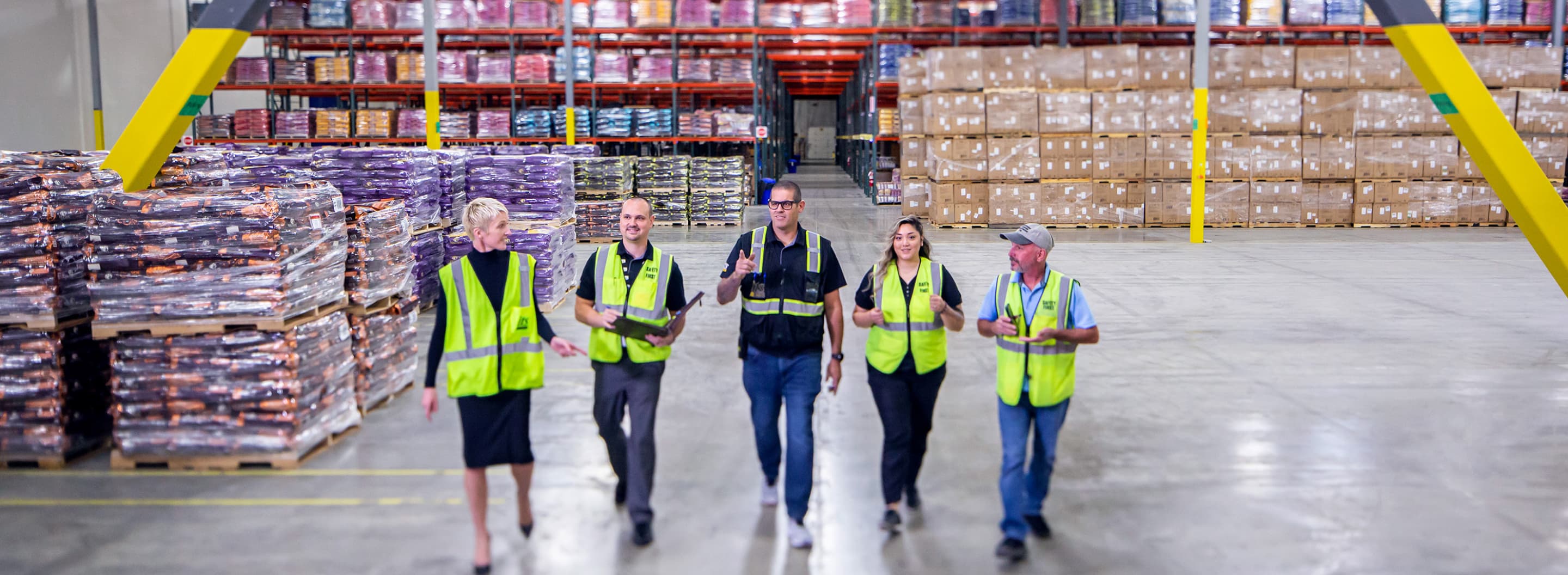
Ever since artificial intelligence (AI) language models like ChatGPT debuted on the internet, the business world has been considering the application of generative artificial intelligence and its integration with industry-related technology. AI has the potential to revolutionize processes, forecasting, and resource planning. It's a cutting-edge technology, and there are plenty of opportunities for AI in warehouse management.
In many ways, distribution centers and AI are a natural fit. Many distribution center processes are repetitive and time-sensitive. Warehouses deal with a lot of data to inform decisions on inventory planning, asset allocation, and employee performance. Artificial intelligence in warehouse management can help improve and inform many of those areas, but the actual application of it is still in its early phases.
Areas where AI is making the most difference in warehouse management
Demand Planning
Demand planning is one of the biggest challenges facing the logistics industry, and since the 2020 pandemic, the logistics industry has struggled through periods of sparce and excess inventory. Companies need to be able to accurately forecast demand and then be nimble enough to adapt to it. AI can help with the forecasting piece.
AI thrives when it has a large amount of data to work with, making it perfect for location-based demand planning. Because it needs a plethora of data to work with, AI is great at forecasting demand for urban areas with a lot of population density; the greater the population density, the more purchasing activity, and in turn the more data AI has to work with.
Demand planners can leverage AI to forecast demand for urban areas and spend more time looking into harder-to-analyze areas, such as niche markets and rural areas.
Picking routes
Warehouse workers can travel long distances when picking orders. Leveraging AI to optimize routes and prioritize picks can cut down on excess trips and increase the efficiency of order fulfillment.
AI also can help with intelligent batching. With intelligent batching, AI uses factors like order priority, pick location, travel cost, final destination, and product attributes to batch orders, enabling pickers to work on multiple orders simultaneously. This ultimately improves efficiency and leads to greener delivery practices.
Predictive equipment maintenance
Equipment maintenance is a growing problem for many industries in the US. In 2022, McKinsey & Company surveyed 100 senior leaders that were in charge of equipment maintenance and asset productivity for their organizations. The survey revealed that 62% of respondents reported above-inflation of maintenance costs, and 84% said they were adopting predictive maintenance approaches for critical assets.
Equipment maintenance is a constant part of warehouse operations that can be difficult to keep track of. Breakdowns are expensive, not only because of equipment repairs but also because of lost time while the equipment is down.
AI-enabled predictive maintenance can track equipment performance and recommend optimal maintenance schedules, which ultimately saves money and time.
Real-time operations visibility
When combined with tracking technologies like RFID, AI can supply a more detailed level of visibility into the real-time tracking of personnel and inventory. Knowing where inventory and people are can help reduce manual processes, improve inventory control, and identify when items are in the wrong location.
Tracking technology already exists through RFID, but adding a layer of AI can help better identify and track objects, predict behavior, and optimize processes in real time. Having that more detailed level of visibility provided in real time enables quicker reaction times, better-informed problem solving, and overall improved efficiency.
Workforce planning
Proper labor allocation during shifts is critical when it comes to maintaining productivity and hitting volume goals. Warehouse managers typically make allocation decisions throughout a shift based on daily volume goals, deadlines, and productivity levels. AI can inform these decisions and provide insights that lead to more efficient labor planning.
Employee performance management
Many warehouse management teams use Engineered Labor Standards (ELS) to set individual employee performance goals. Capturing ELS data is a time consuming, and sometimes costly, process. AI can help reduce that collection process by predicting the time it takes to complete tasks using variables like the type of work, the work area, the travel distance, and more.
Is AI really disrupting the warehouse and logistics industry?
Sort of. In August, Gartner released a hype curve that pretty well summarizes the journey of AI technology. See below.

In logistics, AI is currently making its way up the Peak of Inflated Expectations, and like most disruptive technologies, the pace of innovation in AI is outstripping the market’s ability to absorb it. This is especially true in logistics. There are many moving technological parts to a supply chain: warehouse management systems, partner integrations, and so on. Integrating AI with the existing web of technologies, some of which like EDI go back to the 1980s, is going to take additional time before reaching its full potential.
There is also a healthy amount of industry skepticism around becoming a beta user for flashy, generative-AI technologies, especially if the company producing the technology doesn’t have the logistics chops to back up their marketing claims. Warehouse management and logistics operations can be very nuanced and complex, and it takes hard won experience to understand the best opportunities for innovation.
In the end, being a fast follower of proven technologies is the best strategy.
AI is only as good as the data that informs it
Generative AI works by feeding off data, which can be problematic if the data is stale or inaccurate. That’s why it is important that businesses get their data quality right before adding the complexities of AI. There is a lot of work that needs to happen at the integration layer to make these technologies work correctly and efficiently. Otherwise, the technology that’s supposed to be making operations more efficient could do the exact opposite.
Ideally, the data behind any automation should be timely, complete, and accurate. Innovation comes later.
Using AI to empower people, not replace them
AI has the potential to make processes more efficient, but having competent, respected ground operators is just as important. AI applications should make life better for employees and customers, but that doesn’t mean it should replace them. The end goal of any automation in logistics is to move freight around the world and deliver for the people that count on it; people will always be at the center of that equation.
Although the goal of AI shouldn’t be to replace people, it can help with labor shortages. The logistics industry is facing a labor crisis when it comes to availability. In October 2023, The US Chamber of Commerce determined that if every unemployed person in the US found a job, there would still be around 3 million open jobs. AI can help fill the labor gap by making operations, training, and onboarding more efficient.
Curious to learn more about AI’s impact from a 3PL perspective? ITS Logistics Peter Weis talked about this topic with the team at DAT in episode 265 of DAT IQ Live. Click the link to explore that conversation.
Streamline Warehouse Management with the industry-leading team at ITS Logistics
ITS Logistics and its team have decades of expertise in warehouse management and every type of distribution and fulfillment service, including dedicated fleet services, drayage and intermodal, asset-lite transportation, and more.
ITS Logistics maintains a high standard for distribution and fulfillment:
- 99.6% ASN Timeliness
- 99.8% Load Quality
- 99.8% ASN Accuracy
- 99.9% On-Time Shipping
- 99.4% Fill Rate
- 99.3% Pallet & Carton Labeling
With the highest level of service, unmatched industry experience and work ethic, and a laser focus on innovation and technology– the team at ITS strives to improve the quality of life for its partners by delivering excellence at every turn.
Reach out to learn more about ITS Logistics and find a creative logistics solution that will work for your business.



